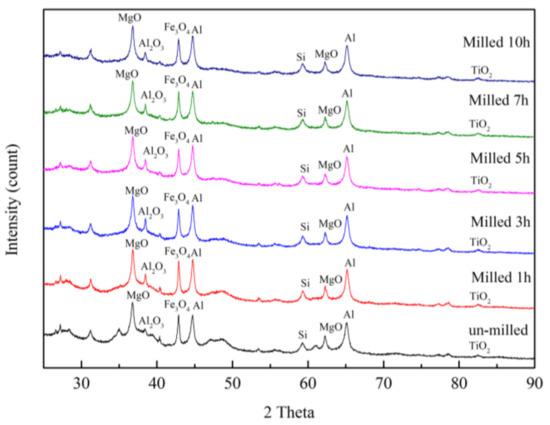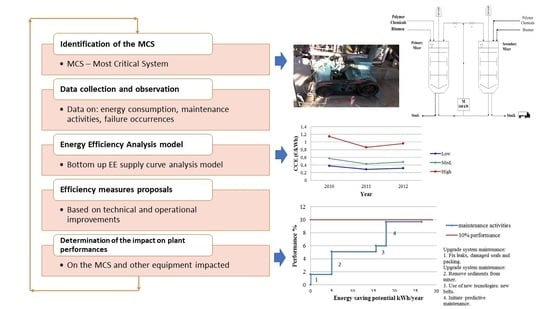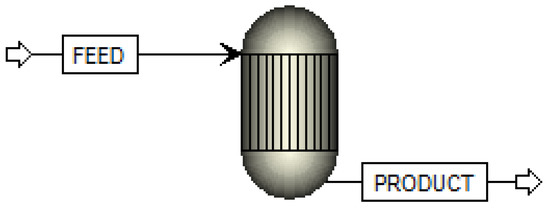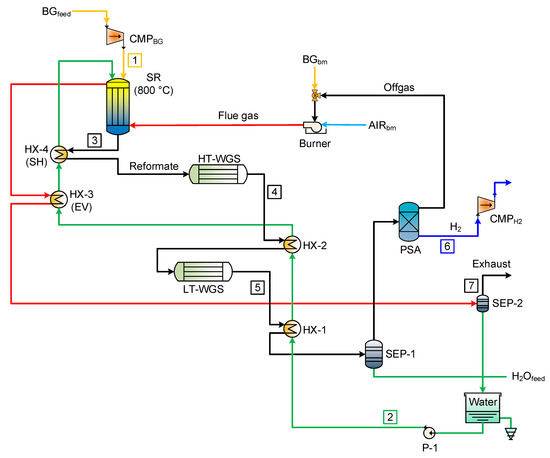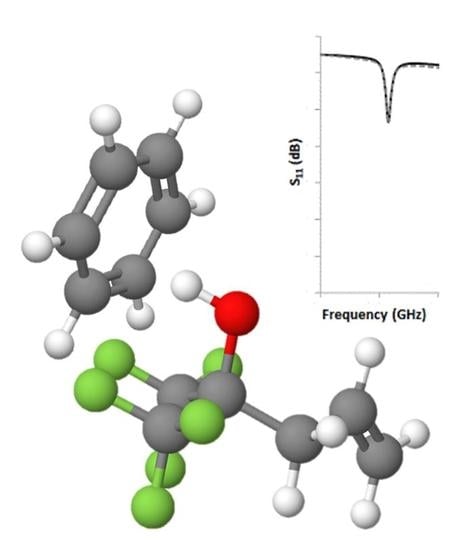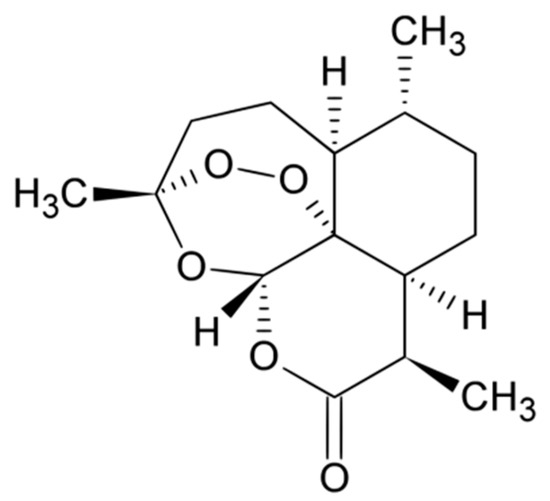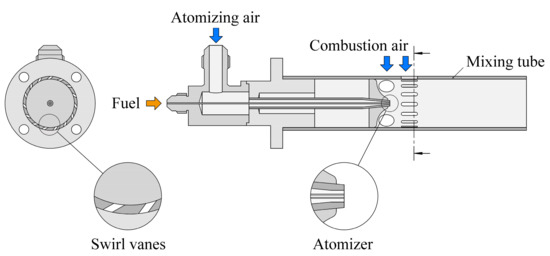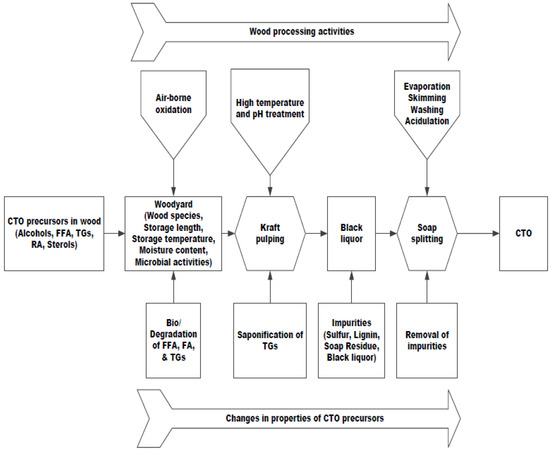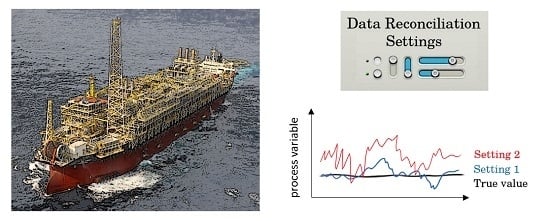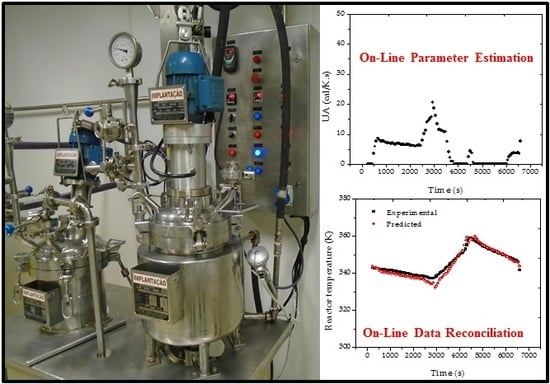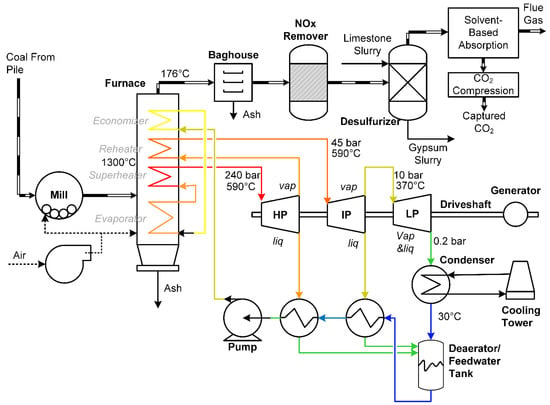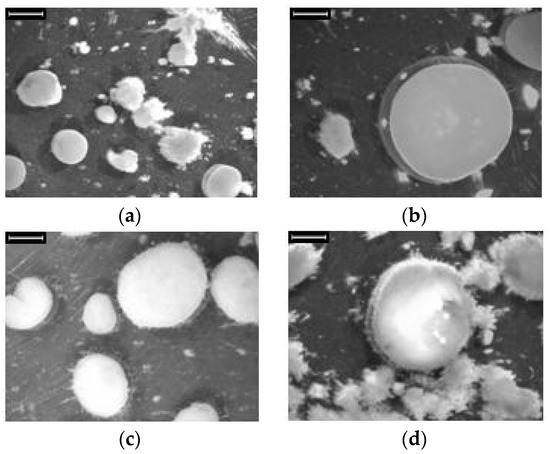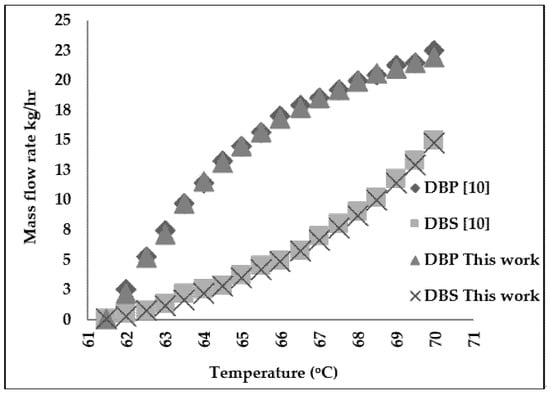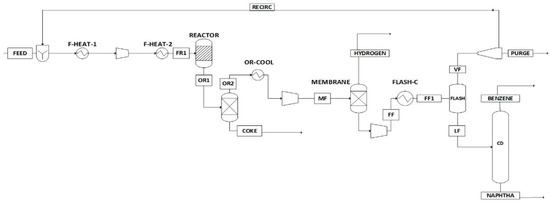Process System Engineering for More Efficient Power and Chemicals Production
A topical collection in Processes (ISSN 2227-9717).
Viewed by 233627
Share This Topical Collection
Editors
 Prof. Dr. Fausto Gallucci
Prof. Dr. Fausto Gallucci
 Prof. Dr. Fausto Gallucci
Prof. Dr. Fausto Gallucci
E-Mail
Website
Collection Editor
Inorganic Membranes and Membrane Reactors, Sustainable Process Engineering, Department of Chemical Engineering and Chemistry, Eindhoven University of Technology, 5612 AZ Eindhoven, The Netherlands
Interests: Process design and intensification; membranes and membrane reactors; separation
Special Issues, Collections and Topics in MDPI journals
 Dr. Vincenzo Spallina
Dr. Vincenzo Spallina
 Dr. Vincenzo Spallina
Dr. Vincenzo Spallina
E-Mail
Website
Collection Editor
Department of Chemical Engineering and Analytical Science, The University of Manchester, Oxford Road, Manchester M13 9PL, UK
Interests: chemical looping; carbon capture and storage; membranes and membrane reactors; fuel cells; process integration
Topical Collection Information
Dear Colleagues,
Process System Engineering (PSE) is a very powerful tool for the optimization of chemical plants. The need for more efficient processes, especially in energy intensive industries, is driving the research towards more efficient and often compact process designs. The Special Issue, "Process System Engineering for more Efficient Power and Chemical Production" of Processes seeks contributions to assess the state-of-the-art and future developments in the exiting area of process design. Topics include, but are not limited to, process system integration, process intensification, computational driven process synthesis, plant optimization, advanced separations, control and safety systems.
Papers involving industrial exploitation of novel process designs are particularly encouraged to give the reader an overview of the challenges to be faced when integrating novel processes.
Dr. Fausto Gallucci
Dr. Vincenzo Spallina
Collection Editors
Manuscript Submission Information
Manuscripts should be submitted online at www.mdpi.com by registering and logging in to this website. Once you are registered, click here to go to the submission form. Manuscripts can be submitted until the deadline. All submissions that pass pre-check are peer-reviewed. Accepted papers will be published continuously in the journal (as soon as accepted) and will be listed together on the collection website. Research articles, review articles as well as short communications are invited. For planned papers, a title and short abstract (about 100 words) can be sent to the Editorial Office for announcement on this website.
Submitted manuscripts should not have been published previously, nor be under consideration for publication elsewhere (except conference proceedings papers). All manuscripts are thoroughly refereed through a single-blind peer-review process. A guide for authors and other relevant information for submission of manuscripts is available on the Instructions for Authors page. Processes is an international peer-reviewed open access monthly journal published by MDPI.
Please visit the Instructions for Authors page before submitting a manuscript.
The Article Processing Charge (APC) for publication in this open access journal is 2400 CHF (Swiss Francs).
Submitted papers should be well formatted and use good English. Authors may use MDPI's
English editing service prior to publication or during author revisions.
Keywords
- Integrated processes
- process system integration,
- process intensification,
- computational driven process synthesis,
- plant optimization,
- advanced separations,
- plant wide controls
Published Papers (30 papers)
Open AccessArticle
Estimation and Improvement of Recovery of Low Grade Copper Oxide Using Sulfide Activation Flotation Method Based on GA–BPNN
by
Wenlin Nie, Jianjun Fang, Shuming Wen, Qicheng Feng, Yanbing He and Xiaoyong Yang
Cited by 6 | Viewed by 2326
Abstract
Copper oxide ore is an important copper ore resource. For a certain copper oxide ore in Yunnan, China, experiments have been conducted on the grinding fineness, collector dosage, sodium sulfide dosage, inhibitor dosage, and activator dosage. The results showed that, by controlling the
[...] Read more.
Copper oxide ore is an important copper ore resource. For a certain copper oxide ore in Yunnan, China, experiments have been conducted on the grinding fineness, collector dosage, sodium sulfide dosage, inhibitor dosage, and activator dosage. The results showed that, by controlling the above conditions, better sulfide flotation indices of copper oxide ore are obtained. Additionally, ammonium bicarbonate and ethylenediamine phosphate enhanced the sulfide flotation of copper oxide ore, whereas the combined activator agent exhibited a better performance than either individual activator. In addition, to optimize all of the conditions in a more reasonable way, a combination of the 5-11-1 genetic algorithm and back propagation neural network (GA–BPNN) was used to set up a mathematical optimization model. The results of the back propagation neural network (BPNN) model showed that the R
2 value was 0.998, and the results were in accordance with the requirement model. After 4169 iterations, the error in the objective function was 0.001, which met the convergence requirements for the final solution. The genetic algorithm (GA) model was used to optimize the BPNN model. After 100 generations, a copper recovery of 87.62% was achieved under the following conditions: grinding fineness of 0.074 mm, which accounted for 91.7%; collector agent dosage of 487.7 g/t; sodium sulfide dosage of 1157.2 g/t; combined activator agent dosage of 537.8 g/t; inhibitor dosage of 298.9 g/t. Using the combined amine and ammonium salt to enhance the sulfide activation efficiency, a GA–BPNN model was used to achieve the goal of global optimizations of copper oxide ore and good flotation indices were obtained.
Full article
►▼
Show Figures
Open AccessArticle
Development of a Numerical Model for a Compact Intensified Heat-Exchanger/Reactor
by
Menglin He, Zetao Li, Xue Han, Michel Cabassud and Boutaib Dahhou
Cited by 11 | Viewed by 4114
Abstract
A heat-exchanger/reactor (HEX reactor) is a kind of plug-flow chemical reactor which combines high heat transfer ability and chemical performance. It is a compact reactor designed under the popular trend of process intensification in chemical engineering. Previous studies have investigated its characteristics experimentally.
[...] Read more.
A heat-exchanger/reactor (HEX reactor) is a kind of plug-flow chemical reactor which combines high heat transfer ability and chemical performance. It is a compact reactor designed under the popular trend of process intensification in chemical engineering. Previous studies have investigated its characteristics experimentally. This paper aimed to develop a general numerical model of the HEX reactor for further control and diagnostic use. To achieve this, physical structure and hydrodynamic and thermal performance were studied. A typical exothermic reaction, which was used in experiments, is modeled in detail. Some of the experimental data without reaction were used for estimating the heat transfer coefficient by genetic algorithm. Finally, a non-linear numerical model of 255 calculating modules was developed on the Matlab/Simulink platform. Simulations of this model were done under conditions with and without chemical reactions. Results were compared with reserved experimental data to show its validity and accuracy. Thus, further research such as fault diagnosis and fault-tolerant control of this HEX reactor could be carried out based on this model. The modeling methodology specified in this paper is not restricted, and could also be used for other reactions and other sizes of HEX reactors.
Full article
►▼
Show Figures
Open AccessArticle
Optimization of Distillation Sequences with Nonsharp Separation Columns
by
Xi Wang, Zengzhi Du, Yunlu Zhang, Jingde Wang, Jianhong Wang and Wei Sun
Cited by 14 | Viewed by 5734
Abstract
Nonsharp distillation sequences are widely used in industrial separation processes; however, most current research has not discussed this topic, except in sequences with heat integration under special operating conditions, including complex columns. The sequence with nonsharp separation has the features of general distillation
[...] Read more.
Nonsharp distillation sequences are widely used in industrial separation processes; however, most current research has not discussed this topic, except in sequences with heat integration under special operating conditions, including complex columns. The sequence with nonsharp separation has the features of general distillation sequences, which are usually optimized by adjusting the separation sequence and the design/operation parameters of each column in the sequence, making the optimization a mixed integer nonlinear programming (MINLP) problem, which is usually hard to solve. With inclusion of nonsharp separation columns, the sequence optimization becomes even more complicated and computationally intensive. This work aimed to optimize the distillation sequence, including nonsharp distillation alongside simple columns and dividing wall columns. Inspired by the dynamic programing method for sharp distillation sequence, a framework for automatic optimization is proposed to decompose the MINLP problem into integer programming (IP) and nonlinear programming (NLP) problems. The optimization processes of sharp and nonsharp distillation sequences are compared and the solution space in terms of the possible number of distillation sequences with nonsharp separation is discussed. Two optimization cases, including an industrial one, are included to validate the proposed framework.
Full article
►▼
Show Figures
Open AccessArticle
Systematic and Model-Assisted Process Design for the Extraction and Purification of Artemisinin from Artemisia annua L.—Part IV: Crystallization
by
Maximilian Johannes Huter, Axel Schmidt, Fabian Mestmäcker, Maximilian Sixt and Jochen Strube
Cited by 16 | Viewed by 4440
Abstract
In this study, process integration for crystallization of a priori purified
Artemisia annua L. is investigated. For this total process, the integration operation boundaries and behavior of the crystals are studied. This is performed focusing on a conceptual process design study for artemisinin,
[...] Read more.
In this study, process integration for crystallization of a priori purified
Artemisia annua L. is investigated. For this total process, the integration operation boundaries and behavior of the crystals are studied. This is performed focusing on a conceptual process design study for artemisinin, aiming towards the development of a crystallization step under given parameters by process integration. At first, different crystallization systems consisting of ethanol-water or acetone-water mixtures are compared. In subsequent steps, the metastable zone width and the behavior of the crystals regarding agglomeration and breakage are checked. Furthermore, the sensitivities of process variables based on several process parameters are investigated. Additionally, the final process integration of crystallization as a combined purification and isolation step is studied.
Full article
►▼
Show Figures
Open AccessArticle
Systematic and Model-Assisted Process Design for the Extraction and Purification of Artemisinin from Artemisia annua L.—Part III: Chromatographic Purification
by
Fabian Mestmäcker, Axel Schmidt, Maximilian Huter, Maximilian Sixt and Jochen Strube
Cited by 13 | Viewed by 5001
Abstract
In this study, the purification of an extract from
Artemisia annua L. using chromatographic methods is studied. In a first step, a screening of different phases and solvents using thin-layer chromatography (TLC) was performed. Then, a laboratory-scale high performance liquid chromatography (HPLC) method
[...] Read more.
In this study, the purification of an extract from
Artemisia annua L. using chromatographic methods is studied. In a first step, a screening of different phases and solvents using thin-layer chromatography (TLC) was performed. Then, a laboratory-scale high performance liquid chromatography (HPLC) method was developed and transferred to a pilot scale. A reproducibility study based on 120 injections was carried out. The batch process that was developed and the results from a designed continuous simulated moving bed (SMB) chromatography were compared based on characteristic process numbers and economy.
Full article
►▼
Show Figures
Open AccessArticle
Systematic and Model-Assisted Process Design for the Extraction and Purification of Artemisinin from Artemisia annua L.—Part II: Model-Based Design of Agitated and Packed Columns for Multistage Extraction and Scrubbing
by
Axel Schmidt, Maximilian Sixt, Maximilian Johannes Huter, Fabian Mestmäcker and Jochen Strube
Cited by 10 | Viewed by 5361
Abstract
Liquid-liquid extraction (LLE) is an established unit operation in the manufacturing process of many products. However, development and integration of multistage LLE for new products and separation routes is often hindered and is probably more cost intensive due to a lack of robust
[...] Read more.
Liquid-liquid extraction (LLE) is an established unit operation in the manufacturing process of many products. However, development and integration of multistage LLE for new products and separation routes is often hindered and is probably more cost intensive due to a lack of robust development strategies and reliable process models. Even today, extraction columns are designed based on pilot plant experiments. For dimensioning, knowledge of phase equilibrium, hydrodynamics and mass transport kinetics are necessary. Usually, those must be determined experimentally for scale-up, at least in scales of DN50-150 (nominal diameter). This experiment-based methodology is time consuming and it requires large amounts of feedstock, especially in the early phase of the project. In this study the development for the integration of LLE in a new manufacturing process for artemisinin as an anti-malaria drug is presented. For this, a combination of miniaturized laboratory and mini-plant experiments supported by mathematical modelling is used. System data on extraction and washing distributions were determined by means of shaking tests and implemented as a multi-stage extraction in a process model. After the determination of model parameters for mass transfer and plant hydrodynamics in a droplet measurement apparatus, a distributed plug-flow model is used for scale-up studies. Operating points are validated in a mini-plant system. The mini-plant runs are executed in a Kühni-column (DN26) for extraction and a packed extraction column (DN26) for the separation of side components with a throughput of up to 3.6 L/h, yield of up to 100%, and purity of 41% in the feed mixture to 91% after washing.
Full article
►▼
Show Figures
Open AccessArticle
Systematic and Model-Assisted Process Design for the Extraction and Purification of Artemisinin from Artemisia annua L.—Part I: Conceptual Process Design and Cost Estimation
by
Maximilian Sixt, Axel Schmidt, Fabian Mestmäcker, Maximilian Johannes Huter, Lukas Uhlenbrock and Jochen Strube
Cited by 20 | Viewed by 6855
Abstract
The article summarizes a systematic process design for the extraction and purification of artemisinin from annual mugwort (
Artemisia annua L.). Artemisinin serves as an anti-malaria drug, therefore, resource-efficient and economic processes for its production are needed. The process design was based on
[...] Read more.
The article summarizes a systematic process design for the extraction and purification of artemisinin from annual mugwort (
Artemisia annua L.). Artemisinin serves as an anti-malaria drug, therefore, resource-efficient and economic processes for its production are needed. The process design was based on lab-scale experiments and afterwards piloted on miniplant-scale at the institute. In this part of the article, a detailed economic feasibility studies including a reference process as a benchmark the lab-scale process and the pilot-scale process is given. Relevant differences between the different scales are discussed. The details of the respective unit operations (solid-liquid extraction, liquid-liquid extraction, chromatography and crystallization) are presented in dedicated articles. The study showed that even miniaturized lab-scale experiments are able to deliver data detailed enough for scale-up calculations on a theoretical basis. To our knowledge, a comparable systematic process design and piloting was never performed by academia before.
Full article
►▼
Show Figures
Open AccessArticle
RETRACTED: Computational Fluid Dynamics Modeling of the Catalytic Partial Oxidation of Methane in Microchannel Reactors for Synthesis Gas Production
by
Junjie Chen, Wenya Song and Deguang Xu
Cited by 5 | Viewed by 5253
|
Retraction
Abstract
This paper addresses the issues related to the favorable operating conditions for the small-scale production of synthesis gas from the catalytic partial oxidation of methane over rhodium. Numerical simulations were performed by means of computational fluid dynamics to explore the key factors influencing
[...] Read more.
This paper addresses the issues related to the favorable operating conditions for the small-scale production of synthesis gas from the catalytic partial oxidation of methane over rhodium. Numerical simulations were performed by means of computational fluid dynamics to explore the key factors influencing the yield of synthesis gas. The effect of mixture composition, pressure, preheating temperature, and reactor dimension was evaluated to identify conditions that favor a high yield of synthesis gas. The relative importance of heterogeneous and homogenous reaction pathways in determining the distribution of reaction products was investigated. The results indicated that there is competition between the partial and total oxidation reactions occurring in the system, which is responsible for the distribution of reaction products. The contribution of heterogeneous and homogeneous reaction pathways depends upon process conditions. The temperature and pressure play an important role in determining the fuel conversion and the synthesis gas yield. Undesired homogeneous reactions are favored in large reactors, and at high temperatures and pressures, whereas desired heterogeneous reactions are favored in small reactors, and at low temperatures and pressures. At atmospheric pressure, the selectivity to synthesis gas is higher than 98% at preheating temperatures above 900 K when oxygen is used as the oxidant. At pressures below 1.0 MPa, alteration of the dimension in the range of 0.3 and 1.5 mm does not result in significant difference in reactor performance, if made at constant inlet flow velocities. Air shows great promise as the oxidant, especially at industrially relevant pressure 3.0 MPa, thereby effectively inhibiting the initiation of undesired homogeneous reactions.
Full article
►▼
Show Figures
Open AccessArticle
Mechanism of Viscous Oil Fire Flooding Dehumidification Equipment and Structure Optimization
by
Qiji Sun, Yanfang Lv and Chunsheng Wang
Cited by 1 | Viewed by 3734
Abstract
Considering the issue caused by the tail gas of viscous oil fire flooding, which carries a large amount of jeopardizing liquid, the Liaohe Oilfield No. 56 desulfurization station applies the vertical processing separator as the main dehumidification equipment for moisture elimination. However, the
[...] Read more.
Considering the issue caused by the tail gas of viscous oil fire flooding, which carries a large amount of jeopardizing liquid, the Liaohe Oilfield No. 56 desulfurization station applies the vertical processing separator as the main dehumidification equipment for moisture elimination. However, the lack of study on the separator’s gas–liquid separation mechanism leads to unclear recognition of the equipment’s processing capability, which easily causes the desulfurization tower to water out, and the tail gas gathering network system to get frozen and blocked. To result in a solution to the problems above, numerical simulation software is applied in this paper based on the oil field’s actual operation data to establish a mathematical model for calculation, which may assist in simulating the gas–liquid separating process, in analyzing the flow field distribution within the separator, and in studying the dehumidification mechanism in terms of influencing factors and laws of equipment dehumidification efficiency. Finally, this helps optimizing the separator’s structure based on the calculation results. The research results provide a theoretical basis and technical support for the practical application of dehumidification equipment in oil fields.
Full article
►▼
Show Figures
Open AccessArticle
Advanced Heterogeneous Fenton Treatment of Coalbed Methane-Produced Water Containing Fracturing Fluid
by
Meng Zhang and Wei Gu
Cited by 9 | Viewed by 5101
Abstract
This study investigated the heterogeneous Fenton treatment to process coalbed methane-produced water containing fracturing fluid and chose the development region of coalbed methane in the Southern Qinshui Basin as a research area. We synthesized the catalyst of Fe-Co/γ-Al
2O
3 by homogeneous
[...] Read more.
This study investigated the heterogeneous Fenton treatment to process coalbed methane-produced water containing fracturing fluid and chose the development region of coalbed methane in the Southern Qinshui Basin as a research area. We synthesized the catalyst of Fe-Co/γ-Al
2O
3 by homogeneous precipitation method and characterized it by BET, XRD, SEM-EDS, FTIR, and XPS. Based on the degradation rate, we studied the influences of the heterogeneous Fenton method on the coalbed methane output water treatment process parameters, including initial pH, H
2O
2 concentration, and the catalyst concentration. We also investigated the impacts of overall reaction kinetics of heterogeneous catalytic oxidation on coalbed methane-produced water containing fracturing fluid. Results showed that Fe-Co/γ-Al
2O
3 as a Fenton catalyst has a good catalytic oxidation effect and can effectively process coalbed methane-produced water. This reaction also followed first-order kinetics. The optimal conditions were as follows: the initial pH of 3.5, a H
2O
2 concentration of 40 mol L
−1, a catalyst concentration of 4 g/L, and an apparent reaction rate constant of 0.0172 min
−1. Our results provided a basis to establish methods for treating coalbed methane-produced water.
Full article
►▼
Show Figures
Open AccessArticle
Ball Milling Treatment of Black Dross for Selective Dissolution of Alumina in Sodium Hydroxide Leaching
by
Thi Thuy Nhi Nguyen, Man Seung Lee and Thi Hong Nguyen
Cited by 19 | Viewed by 7115
Abstract
A process consisting of ball milling followed by NaOH leaching was developed to selectively dissolve alumina from black dross. From the ball milling treatment, it was found that milling speed greatly affected the leaching behavior of silica and the oxides of Ca, Fe,
[...] Read more.
A process consisting of ball milling followed by NaOH leaching was developed to selectively dissolve alumina from black dross. From the ball milling treatment, it was found that milling speed greatly affected the leaching behavior of silica and the oxides of Ca, Fe, Mg, and Ti present in dross. The leaching behavior of the mechanically activated dross was investigated by varying NaOH concentration, leaching temperature and time, and pulp density. In most of the leaching conditions, only alumina and silica were dissolved, while the leaching percentage of other oxides was negligible. The leaching percentage of silica decreased rapidly to nearly zero as pulp density increased to 100 g/L. At the optimum leaching conditions (5 M NaOH, 50 °C, 2 h, pulp density of 100 g/L), the purity of Al in the leaching solution was higher than 98%, but the leaching percentage of alumina was only 35%.
Full article
►▼
Show Figures
Open AccessArticle
Using Field Data for Energy Efficiency Based on Maintenance and Operational Optimisation. A Step towards PHM in Process Plants
by
Micaela Demichela, Gabriele Baldissone and Behnoush Darabnia
Cited by 21 | Viewed by 6245
Abstract
Energy saving is an important issue for any industrial sector; in particular, for the process industry, it can help to minimize both energy costs and environmental impact. Maintenance optimization and operational procedures can offer margins to increase energy efficiency in process plants, even
[...] Read more.
Energy saving is an important issue for any industrial sector; in particular, for the process industry, it can help to minimize both energy costs and environmental impact. Maintenance optimization and operational procedures can offer margins to increase energy efficiency in process plants, even if they are seldom explicitly taken into account in the predictive models guiding the energy saving policies. To ensure that the plant achieves the desired performance, maintenance operations and maintenance results should be monitored, and the connection between the inputs and the outcomes of the maintenance process, in terms of total contribution to manufacturing performance, should be explicit. In this study, a model for the energy efficiency analysis was developed, based on cost and benefits balance. It is aimed at supporting the decision making in terms of technical and operational solutions for energy efficiency, through the optimization of maintenance interventions and operational procedures. A case study is here described: the effects on energy efficiency of technical and operational optimization measures for bituminous materials production process equipment. The idea of the Conservation Supply Curve (CSC) was used to capture both the cost effectiveness of the measures and the energy efficiency effectiveness. The optimization was thus based on the energy consumption data registered on-site: data collection and modelling of the relevant data were used as a base to implement a prognostic and health management (PHM) policy in the company. Based on the results from the analysis, efficiency measures for the industrial case study were proposed, also in relation to maintenance optimization and operating procedures. In the end, the impacts of the implementation of energy saving measures on the performance of the system, in terms of technical and economic feasibility, were demonstrated. The results showed that maintenance optimization could help in reaching an energy costs recovery equal to the 10% of the total costs for an electric motor system.
Full article
►▼
Show Figures
Open AccessArticle
Bleaching of Neutral Cotton Seed Oil Using Organic Activated Carbon in a Batch System: Kinetics and Adsorption Isotherms
by
Abba Chetima, Abdoul Wahabou, Gaston Zomegni, Abdoul Ntieche Rahman and Divine Bup Nde
Cited by 16 | Viewed by 7320
Abstract
In the processing of cotton and neem seeds to obtain oil for diverse uses, enormous quantities of seed husk are generated as waste, which when not properly disposed of, poses environmental problems. One way of reducing this waste is to use it for
[...] Read more.
In the processing of cotton and neem seeds to obtain oil for diverse uses, enormous quantities of seed husk are generated as waste, which when not properly disposed of, poses environmental problems. One way of reducing this waste is to use it for the production of activated carbon (AC) for its multiple applications. In this work, activated carbon was produced from cotton and neem seed husks by carbonization followed by acid activation. The prepared ACs were characterized for its porosity and surface properties as well as for its ability to bleach neutral cotton seed oil. The prepared ACs are very efficient in the decoloration process, as they removed about 96–98% of the pigments compared to 98.4% removal with commercial bleaching earth. Temperature had a pronounced effect on the bleaching of neutral cotton seed oil. Maximum adsorption was observed at 60 °C for a contact time of 45 min. The adsorption kinetics were modelled by the intra-particle and the pseudo-second order equations while the adsorption isotherms followed the Langmuir and Freundlich equations. It is concluded that the organic ACs are efficient in pigment removal from neutral cotton seed oil and therefore are potential bleaching agents for the vegetable oil industry.
Full article
►▼
Show Figures
Open AccessArticle
Methanol Synthesis: Optimal Solution for a Better Efficiency of the Process
by
Grazia Leonzio
Cited by 64 | Viewed by 15038
Abstract
In this research, an ANOVA analysis and a response surface methodology are applied to analyze the equilibrium of methanol reaction from pure carbon dioxide and hydrogen. In the ANOVA analysis, carbon monoxide composition in the feed, reaction temperature, recycle and water removal through
[...] Read more.
In this research, an ANOVA analysis and a response surface methodology are applied to analyze the equilibrium of methanol reaction from pure carbon dioxide and hydrogen. In the ANOVA analysis, carbon monoxide composition in the feed, reaction temperature, recycle and water removal through a zeolite membrane are the analyzed factors. Carbon conversion, methanol yield, methanol productivity and methanol selectivity are the analyzed responses. Results show that main factors have the same effect on responses and a common significant interaction is not present. Carbon monoxide composition and water removal have a positive effect, while temperature and recycle have a negative effect on the system. From central composite design, an optimal solution is found in order to overcome thermodynamic limit: the reactor works with a membrane at lower temperature with carbon monoxide composition in the feed equal to 10 mol % and without recycle. In these conditions, carbon conversion, methanol yield, methanol selectivity, and methanol production are, respectively, higher than 60%, higher than 60%, between 90% and 95% and higher than 0.15 mol/h when considering a feed flow rate of 1 mol/h. A comparison with a traditional reactor is also developed: the membrane reactor ensures to have a carbon conversion higher of the 29% and a methanol yield higher of the 34%. Future researches should evaluate an economic analysis about the optimal solution.
Full article
►▼
Show Figures
Open AccessFeature PaperEditor’s ChoiceArticle
Green Hydrogen Production from Raw Biogas: A Techno-Economic Investigation of Conventional Processes Using Pressure Swing Adsorption Unit
by
Gioele Di Marcoberardino, Dario Vitali, Francesco Spinelli, Marco Binotti and Giampaolo Manzolini
Cited by 86 | Viewed by 18111
Abstract
This paper discusses the techno-economic assessment of hydrogen production from biogas with conventional systems. The work is part of the European project BIONICO, whose purpose is to develop and test a membrane reactor (MR) for hydrogen production from biogas. Within the BIONICO project,
[...] Read more.
This paper discusses the techno-economic assessment of hydrogen production from biogas with conventional systems. The work is part of the European project BIONICO, whose purpose is to develop and test a membrane reactor (MR) for hydrogen production from biogas. Within the BIONICO project, steam reforming (SR) and autothermal reforming (ATR), have been identified as well-known technologies for hydrogen production from biogas. Two biogases were examined: one produced by landfill and the other one by anaerobic digester. The purification unit required in the conventional plants has been studied and modeled in detail, using Aspen Adsorption. A pressure swing adsorption system (PSA) with two and four beds and a vacuum PSA (VPSA) made of four beds are compared. VPSA operates at sub-atmospheric pressure, thus increasing the recovery: results of the simulations show that the performances strongly depend on the design choices and on the gas feeding the purification unit. The best purity and recovery values were obtained with the VPSA system, which achieves a recovery between 50% and 60% at a vacuum pressure of 0.1 bar and a hydrogen purity of 99.999%. The SR and ATR plants were designed in Aspen Plus, integrating the studied VPSA model, and analyzing the behavior of the systems at the variation of the pressure and the type of input biogas. The SR system achieves a maximum efficiency, calculated on the LHV, of 52% at 12 bar, while the ATR of 28% at 18 bar. The economic analysis determined a hydrogen production cost of around 5 €/kg of hydrogen for the SR case.
Full article
►▼
Show Figures
Open AccessArticle
Investigation of the Interaction between Benzene and SXFA Using DFT
by
Katherine M. E. Stewart, Ian P. Hamilton and Alexander Penlidis
Cited by 2 | Viewed by 4752
Abstract
Density Functional Theory (DFT) studies were conducted to evaluate the sensing mechanism between benzene and a polymeric sensing material, referred to as SXFA, which contains trifluoro-groups and OH-groups. These studies were undertaken to improve the understanding of how benzene and SXFA mechanistically interact
[...] Read more.
Density Functional Theory (DFT) studies were conducted to evaluate the sensing mechanism between benzene and a polymeric sensing material, referred to as SXFA, which contains trifluoro-groups and OH-groups. These studies were undertaken to improve the understanding of how benzene and SXFA mechanistically interact based on their chemistry, information which can be used to more efficiently design polymeric sensing materials. We find that benzene adsorbed onto the OH-groups in SXFA rather than the trifluoro-groups as previously proposed. Specifically, we find that sorption results from electrostatic attraction between the negative benzene ring and the positive hydrogens of the OH-groups of SXFA.
Full article
►▼
Show Figures
Open AccessArticle
Systematic and Model-Assisted Evaluation of Solvent Based- or Pressurized Hot Water Extraction for the Extraction of Artemisinin from Artemisia annua L.
by
Maximilian Sixt and Jochen Strube
Cited by 36 | Viewed by 8111
Abstract
In this study, the solvent based extraction of artemisinin from
Artemisia annua L. using acetone in percolation mode is compared to the method of pressurized hot water extraction. Both techniques are simulated by a physico-chemical process model. The model as well as the
[...] Read more.
In this study, the solvent based extraction of artemisinin from
Artemisia annua L. using acetone in percolation mode is compared to the method of pressurized hot water extraction. Both techniques are simulated by a physico-chemical process model. The model as well as the model parameter determination, including the thermal degradation of artemisinin are shown and discussed. For the conventional extraction, a solvent screening is performed considering various organic solvents. A temperature screening is presented for the systematic design of the pressurized hot water extraction. The best temperature with regards to thermal decomposition and high productivity was found to be 80 °C. Both, conventional percolation and Pressurized Hot Water Extraction (PHWE) are suitable for the extraction of artemisinin. The extraction curves show a high conformity with the simulation results.
Full article
►▼
Show Figures
Open AccessArticle
Fuel Evaporation in an Atmospheric Premixed Burner: Sensitivity Analysis and Spray Vaporization
by
Dávid Csemány and Viktor Józsa
Cited by 13 | Viewed by 8642
Abstract
Calculation of evaporation requires accurate thermophysical properties of the liquid. Such data are well-known for conventional fossil fuels. In contrast, e.g., thermal conductivity or dynamic viscosity of the fuel vapor are rarely available for modern liquid fuels. To overcome this problem, molecular models
[...] Read more.
Calculation of evaporation requires accurate thermophysical properties of the liquid. Such data are well-known for conventional fossil fuels. In contrast, e.g., thermal conductivity or dynamic viscosity of the fuel vapor are rarely available for modern liquid fuels. To overcome this problem, molecular models can be used. Currently, the measurement-based properties of n-heptane and diesel oil are compared with estimated values, using the state-of-the-art molecular models to derive the temperature-dependent material properties. Then their effect on droplet evaporation was evaluated. The critical parameters were liquid density, latent heat of vaporization, boiling temperature, and vapor thermal conductivity where the estimation affected the evaporation time notably. Besides a general sensitivity analysis, evaporation modeling in a practical burner ended up with similar results. By calculating droplet motion, the evaporation number, the evaporation-to-residence time ratio can be derived. An empirical cumulative distribution function is used for the spray of the analyzed burner to evaluate evaporation in the mixing tube. Evaporation number did not exceed 0.4, meaning a full evaporation prior to reaching the burner lip in all cases. As droplet inertia depends upon its size, the residence time has a minimum value due to the phenomenon of overshooting.
Full article
►▼
Show Figures
Open AccessArticle
Effect of Moisture Content on Lignocellulosic Power Generation: Energy, Economic and Environmental Impacts
by
Karthik Rajendran
Cited by 9 | Viewed by 7292
Abstract
The moisture content of biomass affects its processing for applications such as electricity or steam. In this study, the effects of variation in moisture content of banagrass and energycane was evaluated using techno-economic analysis and life-cycle assessments. A 25% loss of moisture was
[...] Read more.
The moisture content of biomass affects its processing for applications such as electricity or steam. In this study, the effects of variation in moisture content of banagrass and energycane was evaluated using techno-economic analysis and life-cycle assessments. A 25% loss of moisture was assumed as a variation that was achieved by field drying the biomass. Techno-economic analysis revealed that high moisture in the biomass was not economically feasible. Comparing banagrass with energycane, the latter was more economically feasible; thanks to the low moisture and ash content in energycane. About 32 GWh/year of electricity was produced by field drying 60,000 dry MT/year energycane. The investment for different scenarios ranged between $17 million and $22 million. Field-dried energycane was the only economically viable option that recovered the investment after 11 years of operation. This scenario was also more environmentally friendly, releasing 16-gCO
2 equivalent/MJ of electricity produced.
Full article
►▼
Show Figures
Open AccessArticle
Stop Smoking—Tube-In-Tube Helical System for Flameless Calcination of Minerals
by
Nils Haneklaus, Yanhua Zheng and Hans-Josef Allelein
Cited by 12 | Viewed by 8265
Abstract
Mineral calcination worldwide accounts for some 5–10% of all anthropogenic carbon dioxide (CO
2) emissions per year. Roughly half of the CO
2 released results from burning fossil fuels for heat generation, while the other half is a product of the calcination
[...] Read more.
Mineral calcination worldwide accounts for some 5–10% of all anthropogenic carbon dioxide (CO
2) emissions per year. Roughly half of the CO
2 released results from burning fossil fuels for heat generation, while the other half is a product of the calcination reaction itself. Traditionally, the fuel combustion process and the calcination reaction take place together to enhance heat transfer. Systems have been proposed that separate fuel combustion and calcination to allow for the sequestration of pure CO
2 from the calcination reaction for later storage/use and capture of the combustion gases. This work presents a new tube-in-tube helical system for the calcination of minerals that can use different heat transfer fluids (HTFs), employed or foreseen in concentrated solar power (CSP) plants. The system is labeled ‘flameless’ since the HTF can be heated by other means than burning fossil fuels. If CSP or high-temperature nuclear reactors are used, direct CO
2 emissions can be divided in half. The technical feasibility of the system has been accessed with a brief parametric study here. The results suggest that the introduced system is technically feasible given the parameters (total heat transfer coefficients, mass- and volume flows, outer tube friction factors, and –Nusselt numbers) that are examined. Further experimental work will be required to better understand the performance of the tube-in-tube helical system for the flameless calcination of minerals.
Full article
►▼
Show Figures
Open AccessArticle
Optimization through Response Surface Methodology of a Reactor Producing Methanol by the Hydrogenation of Carbon Dioxide
by
Grazia Leonzio
Cited by 25 | Viewed by 9571
Abstract
Carbon dioxide conversion and utilization is gaining significant attention worldwide, not only because carbon dioxide has an impact on global climate change, but also because it provides a source for potential fuels and chemicals. Methanol is an important fuel that can be obtained
[...] Read more.
Carbon dioxide conversion and utilization is gaining significant attention worldwide, not only because carbon dioxide has an impact on global climate change, but also because it provides a source for potential fuels and chemicals. Methanol is an important fuel that can be obtained by the hydrogenation of carbon dioxide. In this research, the modeling of a reactor to produce methanol using carbon dioxide and hydrogen is carried out by way of an ANOVA and a central composite design. Reaction temperature, reaction pressure, H
2/CO
2 ratio, and recycling are the chosen factors, while the methanol production and the reactor volume are the studied responses. Results show that the interaction
AC is common between the two responses and allows improvement of the productivity in reducing the volume. A mathematical model for methanol production and reactor volume is obtained with significant factors. A central composite design is used to optimize the process. Results show that a higher productivity is obtained with temperature, CO
2/H
2 ratio, and recycle factors at higher, lower, and higher levels, respectively. The methanol production is equal to 33,540 kg/h, while the reactor volume is 6 m
3. Future research should investigate the economic analysis of the process in order to improve productivity with lower costs.
Full article
►▼
Show Figures
Open AccessFeature PaperArticle
Thermal and Rheological Properties of Crude Tall Oil for Use in Biodiesel Production
by
Peter Adewale and Lew P. Christopher
Cited by 9 | Viewed by 9683
Abstract
The primary objective of this work was to investigate the thermal and rheological properties of crude tall oil (CTO), a low-cost by-product from the Kraft pulping process, as a potential feedstock for biodiesel production. Adequate knowledge of CTO properties is a prerequisite for
[...] Read more.
The primary objective of this work was to investigate the thermal and rheological properties of crude tall oil (CTO), a low-cost by-product from the Kraft pulping process, as a potential feedstock for biodiesel production. Adequate knowledge of CTO properties is a prerequisite for the optimal design of a cost-effective biodiesel process and related processing equipment. The study revealed the correlation between the physicochemical properties, thermal, and rheological behavior of CTO. It was established that the trans/esterification temperature for CTO was greater than the temperature at which viscosity of CTO entered a steady-state. This information is useful in the selection of appropriate agitation conditions for optimal biodiesel production from CTO. The point of interception of storage modulus (G′) and loss modulus (G′′) determined the glass transition temperature (40 °C) of CTO that strongly correlated with its melting point (35.3 °C). The flow pattern of CTO was modeled as a non-Newtonian fluid. Furthermore, due to the high content of fatty acids (FA) in CTO, it is recommended to first reduce the FA level by acid catalyzed methanolysis prior to alkali treatment, or alternatively apply a one-step heterogeneous or enzymatic trans/esterification of CTO for high-yield biodiesel production.
Full article
►▼
Show Figures
Open AccessFeature PaperArticle
Energy Optimization of Gas–Liquid Dispersion in Micronozzles Assisted by Design of Experiment
by
Felix Reichmann, Fabian Varel and Norbert Kockmann
Cited by 14 | Viewed by 6674
Abstract
In recent years gas–liquid flow in microchannels has drawn much attention in the research fields of analytics and applications, such as in oxidations or hydrogenations. Since surface forces are increasingly important on the small scale, bubble coalescence is detrimental and leads to Taylor
[...] Read more.
In recent years gas–liquid flow in microchannels has drawn much attention in the research fields of analytics and applications, such as in oxidations or hydrogenations. Since surface forces are increasingly important on the small scale, bubble coalescence is detrimental and leads to Taylor bubble flow in microchannels with low surface-to-volume ratio. To overcome this limitation, we have investigated the gas–liquid flow through micronozzles and, specifically, the bubble breakup behind the nozzle. Two different regimes of bubble breakup are identified, laminar and turbulent. Turbulent bubble breakup is characterized by small daughter bubbles and narrow daughter bubble size distribution. Thus, high interfacial area is generated for increased mass and heat transfer. However, turbulent breakup mechanism is observed at high flow rates and increased pressure drops; hence, large energy input into the system is essential. In this work Design of Experiment assisted evaluation of turbulent bubbly flow redispersion is carried out to investigate the effect and significance of the nozzle’s geometrical parameters regarding bubble breakup and pressure drop. Here, the hydraulic diameter and length of the nozzle show the largest impacts. Finally, factor optimization leads to an optimized nozzle geometry for bubble redispersion via a micronozzle regarding energy efficacy to attain a high interfacial area and surface-to-volume ratio with rather low energy input.
Full article
►▼
Show Figures
Open AccessFeature PaperArticle
Numerical Aspects of Data Reconciliation in Industrial Applications
by
Maurício M. Câmara, Rafael M. Soares, Thiago Feital, Thiago K. Anzai, Fabio C. Diehl, Pedro H. Thompson and José Carlos Pinto
Cited by 31 | Viewed by 8887
Abstract
Data reconciliation is a model-based technique that reduces measurement errors by making use of redundancies in process data. It is largely applied in modern process industries, being commercially available in software tools. Based on industrial applications reported in the literature, we have identified
[...] Read more.
Data reconciliation is a model-based technique that reduces measurement errors by making use of redundancies in process data. It is largely applied in modern process industries, being commercially available in software tools. Based on industrial applications reported in the literature, we have identified and tested different configuration settings providing a numerical assessment on the performance of several important aspects involved in the solution of nonlinear steady-state data reconciliation that are generally overlooked. The discussed items are comprised of problem formulation, regarding the presence of estimated parameters in the objective function; solution approach when applying nonlinear programming solvers; methods for estimating objective function gradients; initial guess; and optimization algorithm. The study is based on simulations of a rigorous and validated model of a real offshore oil production system. The assessment includes evaluations of solution robustness, constraint violation at convergence, and computational cost. In addition, we propose the use of a global test to detect inconsistencies in the formulation and in the solution of the problem. Results show that different settings have a great impact on the performance of reconciliation procedures, often leading to local solutions. The question of how to satisfactorily solve the data reconciliation problem is discussed so as to obtain improved estimates.
Full article
►▼
Show Figures
Open AccessArticle
On-Line Dynamic Data Reconciliation in Batch Suspension Polymerizations of Methyl Methacrylate
by
Jamille C. Coimbra, Príamo A. Melo, Diego M. Prata and José Carlos Pinto
Cited by 6 | Viewed by 5996
Abstract
A phenomenological model was developed to describe the dynamic evolution of the batch suspension polymerization of methyl methacrylate in terms of reactor temperature, pressure, concentrations and molecular properties of the final polymer. Then, the phenomenological model was used as a process constraint in
[...] Read more.
A phenomenological model was developed to describe the dynamic evolution of the batch suspension polymerization of methyl methacrylate in terms of reactor temperature, pressure, concentrations and molecular properties of the final polymer. Then, the phenomenological model was used as a process constraint in dynamic data reconciliation procedures, which allowed for the successful monitoring of reaction variables in real-time and on-line. The obtained results indicate that heat transfer coefficients change significantly during the reaction time and from batch to batch, exerting a tremendous impact on the process operation. Obtained results also indicate that it can be difficult to attain thermodynamic equilibrium conditions in this system, because of the continuous condensation of evaporated monomer and the large mass transfer resistance offered by the viscous suspended droplets.
Full article
►▼
Show Figures
Open AccessFeature PaperReview
Comparison of CO2 Capture Approaches for Fossil-Based Power Generation: Review and Meta-Study
by
Thomas A. Adams II, Leila Hoseinzade, Pranav Bhaswanth Madabhushi and Ikenna J. Okeke
Cited by 63 | Viewed by 12912
Abstract
This work is a meta-study of CO
2 capture processes for coal and natural gas power generation, including technologies such as post-combustion solvent-based carbon capture, the integrated gasification combined cycle process, oxyfuel combustion, membrane-based carbon capture processes, and solid oxide fuel cells. A
[...] Read more.
This work is a meta-study of CO
2 capture processes for coal and natural gas power generation, including technologies such as post-combustion solvent-based carbon capture, the integrated gasification combined cycle process, oxyfuel combustion, membrane-based carbon capture processes, and solid oxide fuel cells. A literature survey of recent techno-economic studies was conducted, compiling relevant data on costs, efficiencies, and other performance metrics. The data were then converted in a consistent fashion to a common standard (such as a consistent net power output, country of construction, currency, base year of operation, and captured CO
2 pressure) such that a meaningful and direct comparison of technologies can be made. The processes were compared against a standard status quo power plant without carbon capture to compute metrics such as cost of CO
2 emissions avoided to identify the most promising designs and technologies to use for CO
2 emissions abatement.
Full article
►▼
Show Figures
Open AccessArticle
Effects of Inoculum Type and Aeration Flowrate on the Performance of Aerobic Granular SBRs
by
Mariele K. Jungles, Ángeles Val del Río, Anuska Mosquera-Corral, José Luis Campos, Ramón Méndez and Rejane H. R. Costa
Cited by 8 | Viewed by 6175
Abstract
Aerobic granular sequencing batch reactors (SBRs) are usually inoculated with activated sludge which implies sometimes long start-up periods and high solids concentrations in the effluent due to the initial wash-out of the inoculum. In this work, the use of aerobic mature granules as
[...] Read more.
Aerobic granular sequencing batch reactors (SBRs) are usually inoculated with activated sludge which implies sometimes long start-up periods and high solids concentrations in the effluent due to the initial wash-out of the inoculum. In this work, the use of aerobic mature granules as inoculum in order to improve the start-up period was tested, but no clear differences were observed compared to a reactor inoculated with activated sludge. The effect of the aeration rate on both physical properties of granules and reactor performance was also studied in a stable aerobic granular SBR. The increase of the aeration flow rate caused the decrease of the average diameter of the granules. This fact enhanced the COD and ammonia consumption rates due to the increase of the DO level and the aerobic fraction of the biomass. However, it provoked a loss of the nitrogen removal efficiency due to the worsening of the denitrification capacity as a consequence of a higher aerobic fraction.
Full article
►▼
Show Figures
Open AccessArticle
Development of Molecular Distillation Based Simulation and Optimization of Refined Palm Oil Process Based on Response Surface Methodology
by
Noree Tehlah, Pornsiri Kaewpradit and Iqbal M. Mujtaba
Cited by 21 | Viewed by 10222
Abstract
The deodorization of the refined palm oil process is simulated here using ASPEN HYSYS. In the absence of a library molecular distillation (MD) process in ASPEN HYSYS, first, a single flash vessel is considered to represent a falling film MD process which is
[...] Read more.
The deodorization of the refined palm oil process is simulated here using ASPEN HYSYS. In the absence of a library molecular distillation (MD) process in ASPEN HYSYS, first, a single flash vessel is considered to represent a falling film MD process which is simulated for a binary system taken from the literature and the model predictions are compared with the published work based on ASPEN PLUS and DISMOL. Second, the developed MD process is extended to simulate the deodorization process. Parameter estimation technique is used to estimate the Antoine’s parameters based on literature data to calculate the pure component vapor pressure. The model predictions are then validated against the patented results of refining edible oil rich in natural carotenes and vitamin E and simulation results were found to be in good agreement, within a ±2% error of the patented results. Third, Response Surface Methodology (RSM) is employed to develop non-linear second-order polynomial equations based model for the deodorization process and the effects of various operating parameters on the performance of the process are studied. Finally, an optimization framework is developed to maximize the concentration of beta-carotene, tocopherol and free fatty acid while optimizing the feed flow rate, temperature and pressure subject to process constrains. The optimum results of feed flow rate, temperature, and pressure were determined as 1291 kg/h, 147 °C and 0.0007 kPa respectively, and the concentration responses of beta- carotene, tocopherol and free fatty acid were found to be 0.000575, 0.000937 and 0.999840 respectively.
Full article
►▼
Show Figures
Open AccessFeature PaperArticle
Reduction of Dust Emission by Monodisperse System Technology for Ammonium Nitrate Manufacturing
by
Maksym Skydanenko, Vsevolod Sklabinskyi, Saad Saleh and Shahzad Barghi
Cited by 14 | Viewed by 10477
Abstract
Prilling is a common process in the fertilizer industry, where the fertilizer melt is converted to droplets that fall, cool down and solidify in a countercurrent flow of air in a prilling tower. A vibratory granulator was used to investigate liquid jet breakup
[...] Read more.
Prilling is a common process in the fertilizer industry, where the fertilizer melt is converted to droplets that fall, cool down and solidify in a countercurrent flow of air in a prilling tower. A vibratory granulator was used to investigate liquid jet breakup into droplets. The breakup of liquid jets subjected to a forced perturbation was investigated in the Rayleigh regime, where a mechanical vibration was applied in order to achieve the production of monodispersed particles. Images of the jet trajectory, breakup, and the formed drops were captured using a high-speed camera. A mathematical model for the liquid outflow conditions based on a transient two-dimensional Navier–Stokes equation was developed and solved analytically, and the correlations between the process parameters of the vibrator and the jet pressure that characterize their disintegration mode were identified. The theoretical predications obtained from the correlations showed a good agreement with the experimental results. Results of the experiments were used to specify the values of the process parameters of the vibration system, and to test them in the production environment in a mode of monodispersed jet disintegration. The vibration frequency was found to have a profound effect on the production of monodispersed particles. The results of experiments in a commercially-sized plant showed that the granulator design based on this study provided prills with a narrower size range compared to the conventional granulators, which resulted in a substantial reduction in dust emission.
Full article
►▼
Show Figures
Open AccessArticle
Techno-Economic Assessment of Benzene Production from Shale Gas
by
Salvador I. Pérez-Uresti, Jorge M. Adrián-Mendiola, Mahmoud M. El-Halwagi and Arturo Jiménez-Gutiérrez
Cited by 29 | Viewed by 11680
Abstract
The availability and low cost of shale gas has boosted its use as fuel and as a raw material to produce value-added compounds. Benzene is one of the chemicals that can be obtained from methane, and represents one of the most important compounds
[...] Read more.
The availability and low cost of shale gas has boosted its use as fuel and as a raw material to produce value-added compounds. Benzene is one of the chemicals that can be obtained from methane, and represents one of the most important compounds in the petrochemical industry. It can be synthesized via direct methane aromatization (DMA) or via indirect aromatization (using oxidative coupling of methane). DMA is a direct-conversion process, while indirect aromatization involves several stages. In this work, an economic, energy-saving, and environmental assessment for the production of benzene from shale gas using DMA as a reaction path is presented. A sensitivity analysis was conducted to observe the effect of the operating conditions on the profitability of the process. The results show that production of benzene using shale gas as feedstock can be accomplished with a high return on investment.
Full article
►▼
Show Figures
Planned Papers
The below list represents only planned manuscripts. Some of these
manuscripts have not been received by the Editorial Office yet. Papers
submitted to MDPI journals are subject to peer-review.
Title: Advances on membranes and membrane reactors for Fischer-Tropsch synthesis for biofuel production
Authors: E. Fernandez1, D. Liuzzi2, S. Perez1, E. Ipiñazar1, A. Arteche1, S. Rojas2, J.L.G. Fierro2, J.L.Viviente1, D.A. Pacheco Tanaka1
Affiliation: 1 TECNALIA, Energy and Environment Division, Mikeletegi Pasealekua 2, 20009 San Sebastian-Donostia, Spain.
2 Grupo de Estructura y Química Sostenibles, Instituto de Catálisis y Petroleoquímica, CSIC. Marie Curie, 2, 28049 Madrid, Spain.
Abstract: The biomass-to-liquid (BtL) process is an attractive technology to obtain clean liquid second generation bio-fuels and chemicals for the transportation sector. The process, which comprises several steps, is based upon the gasification of biomass and the catalytic transformation of the syngas obtained via the Fischer Tropsch synthesis (FTS). The FTS is a well-established technology and very large plants producing liquid fuels and hydrocarbons from natural gas (GtL) and coal (CtL) are currently operating worldwide. Due to limited supply of biomass the size of the BtL plants should be downscaled. This can be achieved by intensifying the FTS process; i.e., increasing the productivity of the FTS process. Recently, the use of membrane reactors for the FTS by integration of reaction zone, gas feeding and separation unit in a single reactor has been demonstrated. In this review the most significant achievements in the field of catalytic membrane reactors for the FTS will be discussed. Different type of membranes and membrane-reactor configurations including H2O separation and H2-feed distribution will be analyzed.
















